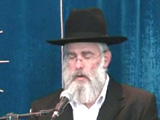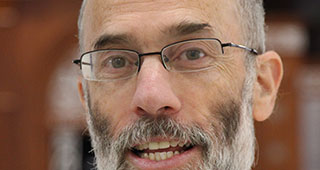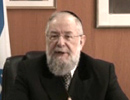Beit Midrash
- Sections
- Peninei Halakha
- Shabbat and Holidays
- The Tenth of Tevet
- The Minor Fasts' Halachot
The minor fasts last from dawn (alot ha-shaĥar) until tzeit ha-kokhavim (when three medium-sized stars are visible in the sky). There are different opinions as to when exactly alot ha-shaĥar occurs: either when the first light begins to appear in the east (when the sun is 17.5 degrees below the horizon) or a short time later, when the eastern part of the sky is illuminated (and the sun is 16.1 degrees below the horizon).
Likewise, there are also two primary opinions about when tzeit ha-kokhavim occurs: either when experts or those with excellent eyesight can see three stars (and the sun is 4.8 degrees below the horizon) or when average people can see three stars (and the sun is 6.2 degrees below the horizon).
It is a common misconception that there is a fixed interval between alot ha-shaĥar and hanetz ha-ĥama (sunrise) and between shki’at ha-ĥama (sunset) and tzeit ha-kokhavim. This is not the case: these intervals depend on the time of year and the place. Therefore, one should use a precise calendar to determine these times.[4]
Technically, halakha follows the more lenient opinion, because these fasts are rabbinic enactments. However, it is best to be stringent. Since we are already fasting all day long, it is preferable to add a few extra minutes in order to fulfill our obligation according to all opinions.
When Asara Be-Tevet falls out on a Friday, one must fast until after tzeit ha-kokhavim, even though Shabbat has already begun by then (sa 249:4).
One who flies from America to Israel will experience a shorter fast, as he is flying against the direction of Earth’s rotation. Every hour in flight shortens the fast by more than half an hour. One who flies from Israel to America extends his fast, as he is flying in the same direction as Earth’s rotation. Every hour in flight adds more than half an hour to the fast. As a rule, the fast starts at alot ha-shaĥar and ends at tzeit ha-kokhavim, of wherever one happens to be at the time (see Igrot Moshe, oĥ 3:96).
[4] Regarding alot ha-shaĥar, see Peninei Halakha: Prayer, ch. 11 nn. 1 and 10. Regarding tzeit ha-kokhavim, see ibid. ch. 25 n. 3. I will provide some examples in order to give the reader an idea of the differences. According to the 16.1° measurement, the interval between alot ha-shaĥar and hanetz ha-ĥama in Eretz Yisrael on Tzom Gedalia is c. 73 minutes, whereas it is c. 86 minutes on 17 Tamuz. According to the 17.5° measurement, the interval is c. 80 minutes on Tzom Gedalia and c. 94 minutes on 17 Tamuz. I approximate because the solar date that coincides with the Hebrew date changes from year to year, resulting in a fluctuation of c. two minutes. On Israel’s coastal plain, the sun rises later because the mountains in the east hide the sun longer. Therefore, the interval between alot ha-shaĥar and sunrise increases by about five minutes. The interval between shki’a and tzeit ha-kokhavim also fluctuates depending on the time of year, but the difference is smaller. There is also a considerable difference between the hill country and the plains in Israel. According to the earlier measurement (4.8°), the interval between shki’a and tzeit in Jerusalem on Tzom Gedalia can be as short as 14 minutes. And according to the later measurement (6.2°), the interval on the coastal plain on 17 Tamuz can be as long as 29.5 minutes. This is why one must use a precise calendar. In the footnotes cited above from Peninei Halakha: Prayer, I explain the issue in depth.

























